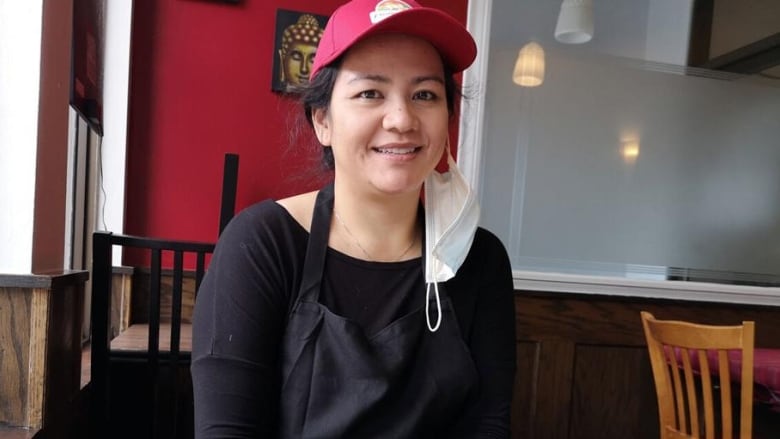How food operations, customers and cooks have all changed since 2013: Andrew Coppolino

As CBC Kitchener-Waterloo has been reflecting back on the 10 years it's been on air and online, food columnist Andrew Coppolinolooksat how food in the region has changed over the same period.Here's Part 1.
In 2013, cauliflower was a big food trendand the snacks featured at the Canadian National Exhibition included taco fixings stuffed into a Doritos chip bag, spice cream conesand a cronut burgerthat packed a wallop of 7,500 calories.
That was then; this is nowthe bloom is off cauliflower and while the CNE still offers a host of quirky snack foods, a lot of serious stuff has changed in the food landscape in those 10 years, across the country and in and around Waterloo region.
Here's just an overview.
How food operations have evolved
While it might seem that there are a lot of fast-food joints in the region, independent restaurants have continued to open many representing foods of the world, from Middle Eastern shawarma to Portuguese bifana.
Today it's rare to find a120-seat restaurants. Instead, independent food operators have started to focus on smaller venues that, while they provide unique food options like Portuguese barbecue or sushi, are take-out and delivery only. They might have a small threeor four-table patio in summer, but that's it. The business model reduces cost overhead from rent, labour and restaurant chattels.
Mark Kenny is procurement manager with hospitality services at University of Guelph. He says smaller locations offer smaller menus which he says speaks to cooking in season.
"With intentionally small menus, it's acceptable to run out of an item in a night if you make sure customers know that you are trying to eliminate food waste by not over cooking or over serving," he said.
There were, of course collaborations between restaurants and chefs a decade ago, but they are much more prevalent now and it includes multiple small or one-person businesses sharing cooking space togetherto save money more than ever before. These spaces become incubatorsthat can and have helped small businesses scale and grow.
How restaurants serve customers
Perhaps the most significant change to the restaurant scene is recent technology which was only a dream 10 years ago: Third-party food delivery appschangedthe way restaurants do business costing them some revenue.
The first Uber Eats started in Toronto in 2015and Doordash appeared in 2019. They are now ubiquitous: you can't visit a restaurant and not see delivery drivers and their insulated, branded take-out bags.
Ten years ago, you'd be hard pressed to find a gluten-free or non-dairy dish on a menu. Now, restaurants put plant-based proteins at the centre of the plate and can accommodate a much wider range of dietary restrictions.
How food has diversified
In 2013, there were few pop-up restaurants and even fewer small, independent "food-preneurs."
You could find, scattered around southern Ontario, dumplings, empanadas and Korean-style sushi. They made their mark primarily through word of mouth and social media thereby blazing a trail for other entrepreneurs but today there is a wide range of international foods in the area, from Ethiopian and Laotian to Salvadoran to Trinidadian.

A decade ago, I would hazard a guess that you'd be hard pressed to find one Filipino food here in Waterloo region. Now there are several restaurants and, in a testament to their growing popularity, they can participate in the recently created Filipino Restaurant Month, which is April.
Even pizza has evolved from its standard toppings (dill pickles and pineapple notwithstanding) to assume a multicultural quality and an international palate. Today, it's easy to find shawarma and butter chicken toppings on pizza a result of innovation and changing population demographics.
Long-time restaurateur and food operations entrepreneur, Stephanie Soulis of Little Mushroom Catering and Lounge in Cambridge, says that in a relatively short period of time, the region has grown away from conventional fast food and Chinese restaurants.
"A lot more space has been made for restaurateurs and chefs from different backgrounds. We've always had Cameron's Seafood for Chinese in Kitchener, but now there are 50 other restaurants from around the world you can try food from. The scene is much more multicultural," Soulis says.
The faces of those preparing our food in restaurants and other food operations have changed. While there is still a way to go, the number of women and racialized food-preneurs has grown. Soulis and Hertzog are examples as are business owners, cooks and bakers Ajoa Mintah of Four All Ice Cream, Cecelia "Ce" Johnston of CE Food Experience, cook Arielle Neils (formerly of Compass Group), Lenore Johnson of LenJo Bakes and Outhoumphonh Vongkhamchanh, chef and owner of Champa Kitchen in uptown Waterloo.
Indigenous chefs Destiny Moser and Sydney Keedwell have brought their cultures and their exploration and presentations of Indigenous foodways into the spotlight in Waterloo region as well.
All of this adds up to many delicious options for people in Waterloo region.












_(720p).jpg)


 OFFICIAL HD MUSIC VIDEO.jpg)
.jpg)



























































































